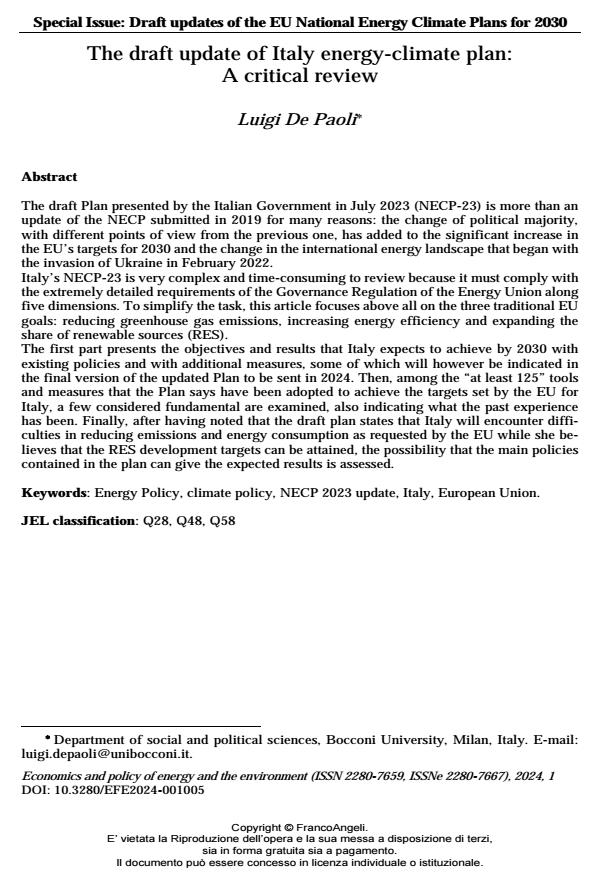The draft update of Italy energy-climate plan: A critical review
Titolo Rivista ECONOMICS AND POLICY OF ENERGY AND THE ENVIRONMENT
Autori/Curatori Luigi De Paoli
Anno di pubblicazione 2024 Fascicolo 2024/1
Lingua Inglese Numero pagine 34 P. 55-88 Dimensione file 261 KB
DOI 10.3280/EFE2024-001005
Il DOI è il codice a barre della proprietà intellettuale: per saperne di più
clicca qui
Qui sotto puoi vedere in anteprima la prima pagina di questo articolo.
Se questo articolo ti interessa, lo puoi acquistare (e scaricare in formato pdf) seguendo le facili indicazioni per acquistare il download credit. Acquista Download Credits per scaricare questo Articolo in formato PDF

FrancoAngeli è membro della Publishers International Linking Association, Inc (PILA)associazione indipendente e non profit per facilitare (attraverso i servizi tecnologici implementati da CrossRef.org) l’accesso degli studiosi ai contenuti digitali nelle pubblicazioni professionali e scientifiche
The draft Plan presented by the Italian Government in July 2023 (NECP-23) is more than an update of the NECP submitted in 2019 for many reasons: the change of political majority, with different points of view from the previous one, has added to the significant increase in the EU’s targets for 2030 and the change in the international energy landscape that began with the invasion of Ukraine in February 2022. Italy’s NECP-23 is very complex and time-consuming to review because it must comply with the extremely detailed requirements of the Governance Regulation of the Energy Union along five dimensions. To simplify the task, this article focuses above all on the three traditional EU goals: reducing greenhouse gas emissions, increasing energy efficiency and expanding the share of renewable sources (RES). The first part presents the objectives and results that Italy expects to achieve by 2030 with existing policies and with additional measures, some of which will however be indicated in the final version of the updated Plan to be sent in 2024. Then, among the “at least 125” tools and measures that the Plan says have been adopted to achieve the targets set by the EU for Italy, a few considered fundamental are examined, also indicating what the past experience has been. Finally, after having noted that the draft plan states that Italy will encounter diffi- culties in reducing emissions and energy consumption as requested by the EU while she be- lieves that the RES development targets can be attained, the possibility that the main policies contained in the plan can give the expected results is assessed.
Parole chiave:Energy Policy, climate policy, NECP 2023 update, Italy, European Union
Jel codes:Q28, Q48, Q58
Luigi De Paoli, The draft update of Italy energy-climate plan: A critical review in "ECONOMICS AND POLICY OF ENERGY AND THE ENVIRONMENT" 1/2024, pp 55-88, DOI: 10.3280/EFE2024-001005